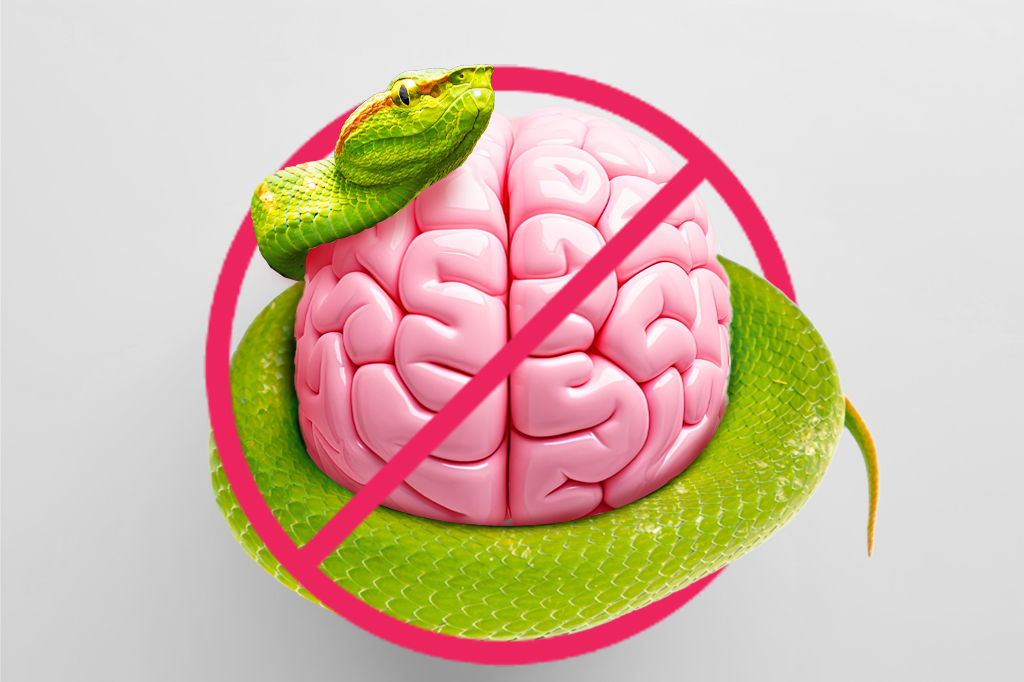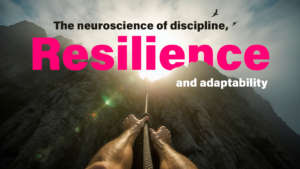
Have you ever made an impulsive decision and wondered why you did it, or have you found yourself in a stressful situation where your response was automatic and instinctive?
The human brain is a complex machine, however, in recent years it has become almost undebatable a myth to understand how we handle our most instinctive decisions.
This whole myth began when neuroscientist Paul MacLean proposed the theory of the triune brain (three in one), which divides the brain into three evolutionary parts: the reptilian, the limbic system, and the neocortex. According to this theory, the reptilian brain, which is the oldest, controls instinctive and survival behaviors such as aggression, dominance, and automatic responses to stimuli (MacLean, 1990). This theory provides us with a structure for understanding how our most basic responses can dominate our actions, especially under stress. This model suggests that, although we have developed advanced cognitive abilities, our automatic and emotional responses are still influenced by primitive brain structures (MacLean, 1990).
For this reason, he maintains that the evolution of the brain has been a layered process, where each new structure has been added to the previous ones. The reptilian brain includes the brainstem and basal ganglia, which are responsible for basic survival functions. On top of this, the limbic system, or the paleomammalian brain, controls emotions and social relationships. Finally, the neocortex, or neomammalian brain, is responsible for higher cognitive functions such as abstract thinking and planning (MacLean, 1990).
Later in 1992, some research strengthened this theory, highlighting that the reptilian brain is crucial for automatic and survival behaviors. In the study conducted by Peredery and colleagues he showed that damage to certain areas of the limbic brain in rats completely eliminated their maternal behavior, supporting the idea that these structures are essential for instinctive and emotional behaviors (Peredery et al., 1992). In this study, rats with limbic system damage due to induced seizures did not show maternal behaviors, such as caring for and protecting their offspring, highlighting the importance of these areas in regulating instinctual behaviors.
Years later, in the 2000’s, this theory was used in the practice of psychology and mental health, where it was highlighted that automatic responses are influenced by primitive brain structures, so they should be taken into account to improve treatment strategies for anxiety disorders and depression. Cognitive behavioral therapy techniques can be adapted to address these automatic responses, providing patients with tools to better manage their instinctive reactions (Price et al., 2004).
Although the reptilian brain theory offers fascinating insight into how our most basic and automatic responses are deeply rooted in our evolutionary biology. In 2020, Cesario et al. debunked this theory, highlighting a misunderstanding about the evolution of the nervous system which is based on a “Linear Natural Scale”, which means that simple organisms in a linear fashion evolved into more complex organisms successively in an evolutionary step-by-step, resulting in small animals such as mice and pigeons being less evolved than more complex organisms such as humans. This is false, since the correct evolutionary theory is that animals are the irradiation of common ancestors, however, the complexity of the nervous system and some cognitive abilities evolved independently between species, as observed in highly complex brains in some insects, sharks, and birds (Cesario, 2020).
It also clarifies the false belief that complex neural structures give greater behavioral and functional complexity, so that larger brains or with larger layers will be more functional, however, the error of this belief is to consider that anatomical evolution originates in the same way as soil layers, where a layer is created on top of an existing one or in onion layers where an external layer covers the several internal ones. In this case, the evolution of functional complexity occurs due to the transformation of existing structures according to the needs of each species due to the context in which they develop. An example of this statement is that the prefrontal cortex that is associated with reason and planning of actions is not a structure found only in humans, but is shared by all mammals. (Cesario, 2020).
Additionally, in contrast to the erroneous theory of the triune brain, this theory continues to maintain its effects in different fields such as current psychology where approaches have been “developed” to manage our instinctive responses (Cesario, 2020). Or in other fields such as neuroanatomy where it has been possible to refute this theory of the reptilian brain by identifying in primitive species reptiles, structures such as the basal ganglia, and in non-mammalian animals such as birds, limbic and periventricular structures such as the dorsal pallium, which are homologous with the neocortex of mammals (Basma, 2020).
In conclusion, taking the myth of the reptilian brain as truth and transferring it to the field of marketing and the daily behavior of the individual can be highly limiting and forget the complexity of reason and emotion of the human being. Because, as previously described, the evolution of the human brain and other mammals is not linear or layered, but by adaptive changes, so it is wrong to think that people only act basically by instinct, and that this instinct that is fixed and automatic leads us to make simple decisions about what to wear or what to buy. or more complex decisions such as the choice of career or partner, based only on a reptilian brain that keeps us in survival mode.
Reference link:
- MacLean PD. The triune brain in evolution: Role in paleocerebral functions. Plenum Press; 1990.
https://pubmed.ncbi.nlm.nih.gov/17797318
- Peredery O, Persinger MA, Blomme C, Parker G. Absence of maternal behavior in rats with lithium/pilocarpine seizure-induced brain damage: Support of MacLean’s triune brain theory. Physiol Behav. 1992; 52(4):665-671.
https://pubmed.ncbi.nlm.nih.gov/1329122
- Price JS, Gardner RJ, Gilbert P, McGuire MT. Can depression, anxiety and somatization be understood as appeasement displays?. J Affect Disord. 2004; 79(1-3):1-118.
https://pubmed.ncbi.nlm.nih.gov/15023475
- Cesario, J., Johnson, D. J., & Eisthen, H. L. (2020). Your Brain Is Not an Onion With a Tiny Reptile Inside. Current Directions in Psychological Science, 29(3), 255-260.
https://journals.sagepub.com/doi/10.1177/0963721420917687
- Basma J, Guley N, Michael Ii LM, Arnautovic K, Boop F, Sorenson J. The evolutionary development of the brain as it pertains to neurosurgery. Cureus. 2020; 12(1)


